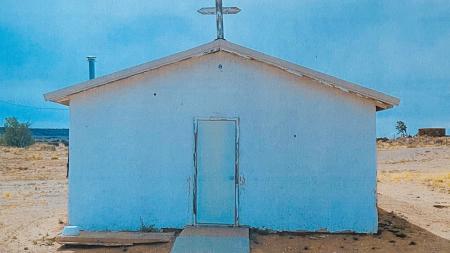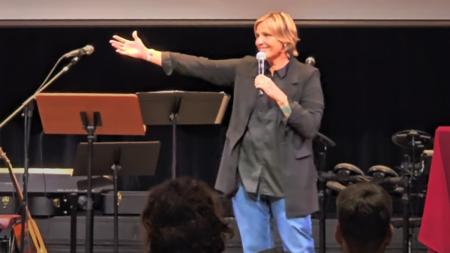Honoring the History of Grand Rapids Church

Rev. Randy Buursma stood in the sanctuary of First Christian Reformed Church in Grand Rapids, Mich., gesturing at the stained-glass windows and the semicircle of pews spreading in four rows to the back of the church.
“Isn’t this beautiful?” said Buursma. “It’s such a wonderful place for us to come and worship God on Sunday mornings.”
Dating back to 1911, the church’s sanctuary reflects a rich history with a well-maintained interior that has seen countless ceremonies and has touched the lives of thousands of worshipers and participants through the years.
But as lovely as it is, said Buursma, the church is in need of repairs, and the building itself, located in the heart of Grand Rapids, has to be expanded to meet the needs of the congregation’s growing ministries.
With that in mind, the church has undertaken a more than $2 million capital campaign. Last week, they got a boost when church members learned First CRC had been awarded a grant from the National Fund for Sacred Spaces.
“Think of it,” said Buursma, “this grant is going to help us keep following where God is leading. It is an encouragement for us to continue growing and facing our challenges right here in this place.”
As part of the National Fund for Sacred Spaces initiative, the church will receive a planning grant and in-kind professional services leading to the opportunity to access up to $250,000 in capital grants for its building, says Chad Martin, director of the fund.
The award, says Martin, comes as part of a $14 million grant allocated to assist aging churches in need of repair and restoration. This grant was announced recently by Partners for Sacred Places and the National Trust for Historic Preservation.
Martin added that the larger grant fund will provide up to $250,000 in capital grants, in addition to planning grants and an array of services, for at least 50 individual congregations from a diversity of faiths over four years.
Speaking about First CRC, he said, “We are excited to support this thriving and growing congregation. They have a daily impact on the community of Grand Rapids.”
Buursma said the congregation is one of many from the CRC and other denominations that are working hard with God’s help to bring hope and healing to people living in the neighborhoods of the central city.
First CRC has active men’s and women’s groups, mentorship programs, community-development efforts, and a ministry for people coming out of prison.
Often its fellowship hall is packed with people sharing meals, prayers, and friendship. This week on Tuesday, Nov. 8, it was full of people who came to vote in the U.S. presidential election.
Taking a visitor on a tour of the church’s exterior, Buursma showed an area on the east side of the building that will be transformed into a new, more inviting entrance. He also pointed out an area where meeting space for educational and other programs will be added.
Standing out there, he waved to neighbors and had to make way for cars pulling into the parking lot for voting.
“We have a vibrant ministry and some recent growth and, truth be told, we are running out of space for the congregation and for all of the services and events we provide to our neighbors,” said Buursma. “We need to push out so that we can grow our services to the community and build relationships.”
The National Fund for Sacred Spaces is a collaboration that builds on Partners for Sacred Places’ decades of work toward helping churches use best-stewardship practices with their historic facilities in order to strengthen, serve, and celebrate their communities for the common good.
The National Trust for Historic Preservation, the nation’s leading preservation organization, has worked for 60 years in advocacy and grant-making to preserve America’s diverse history.
The fund was launched with two grants totaling nearly $14 million from the Indiana-based Lilly Endowment, Inc. Through this initiative, $10 million will be disbursed for capital improvements, and the remainder will be used for planning, technical assistance, coaching, and program oversight, said Martin.


